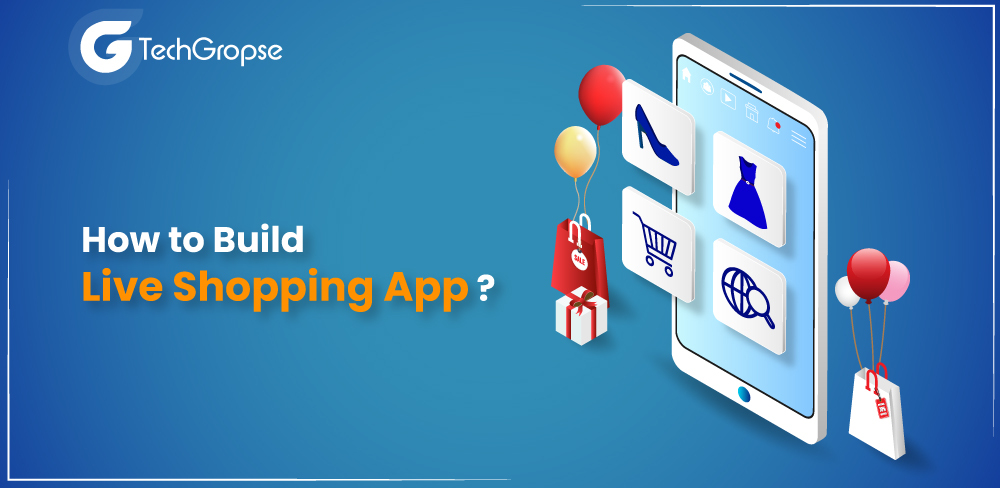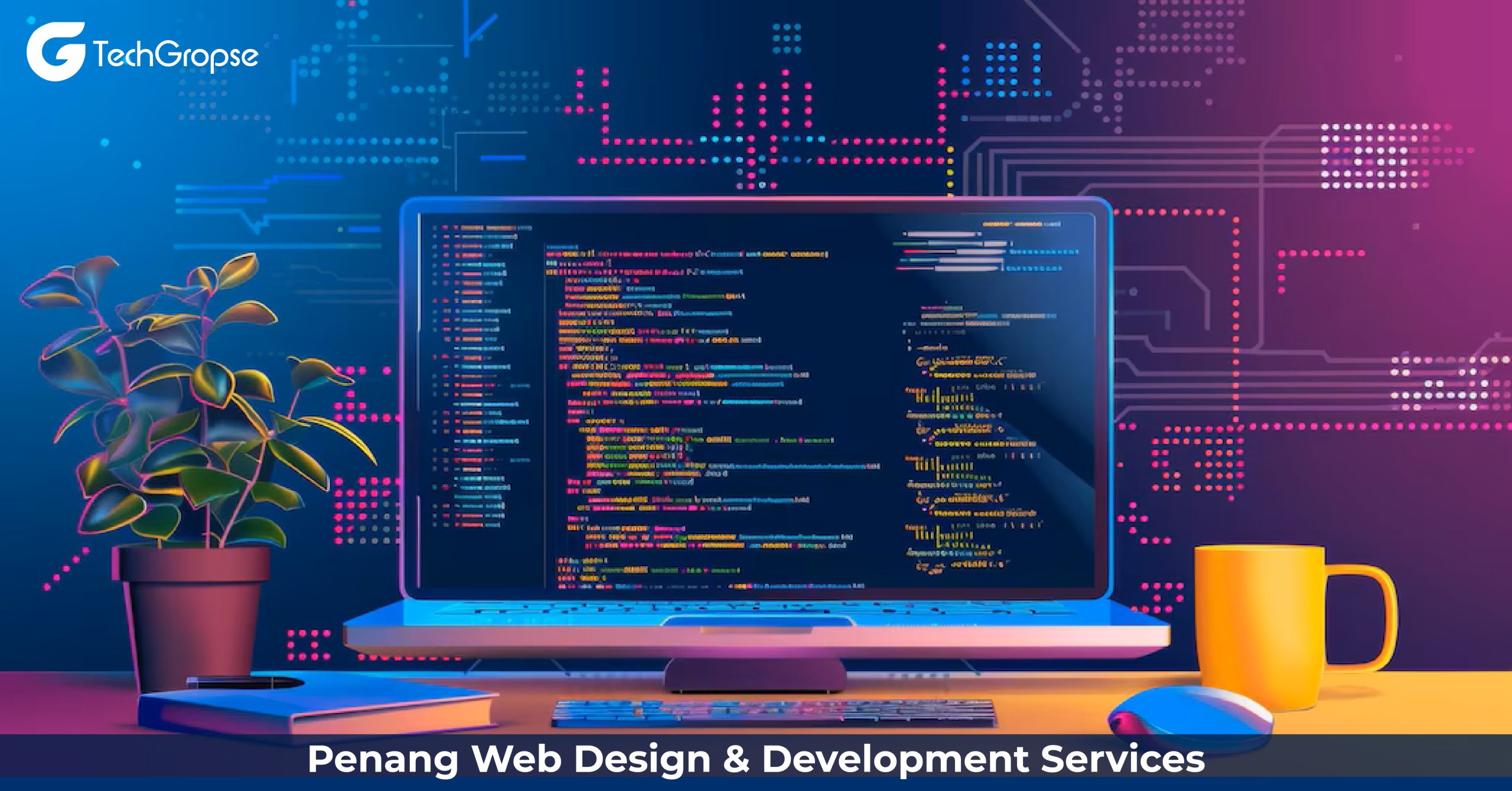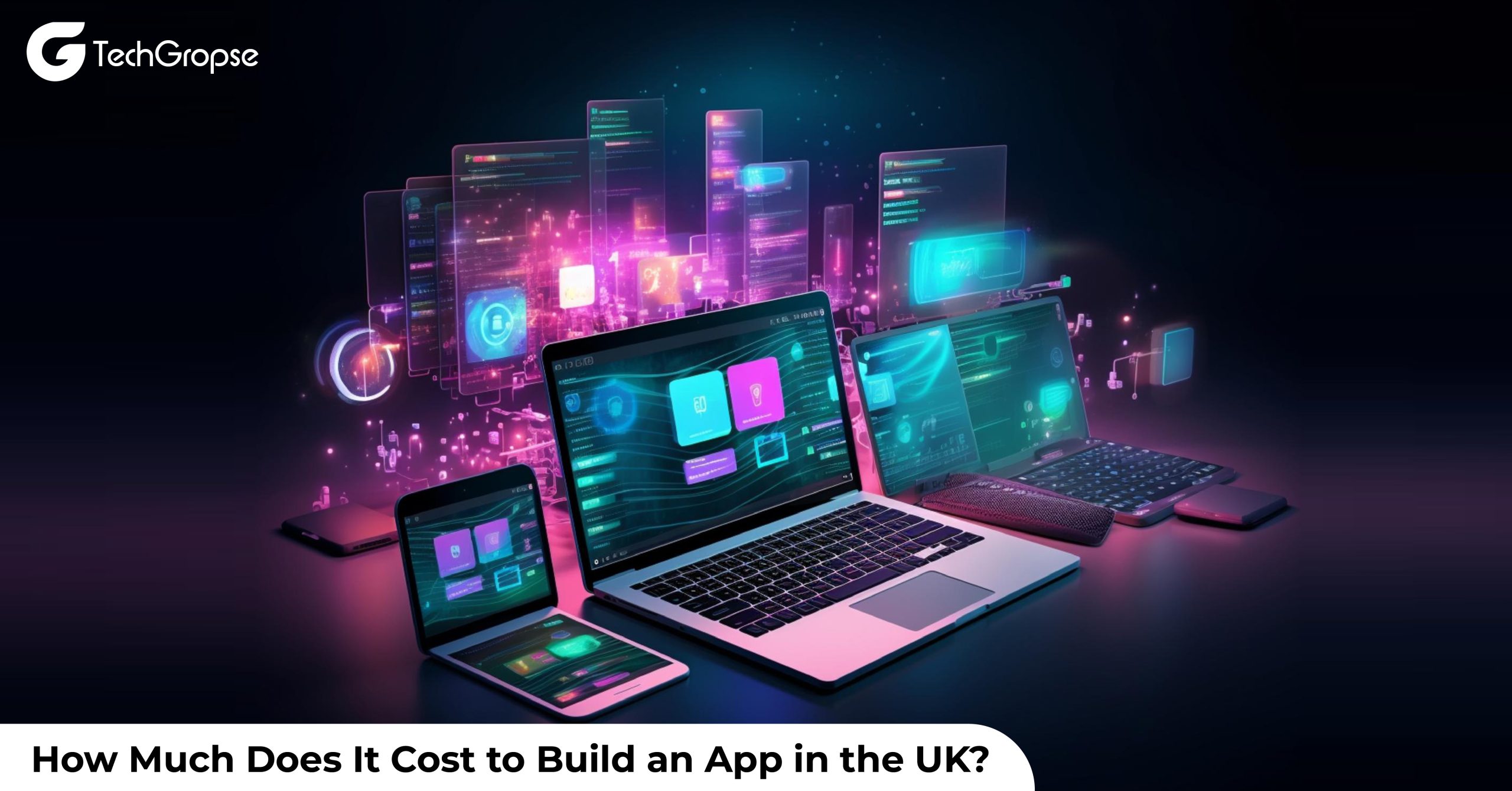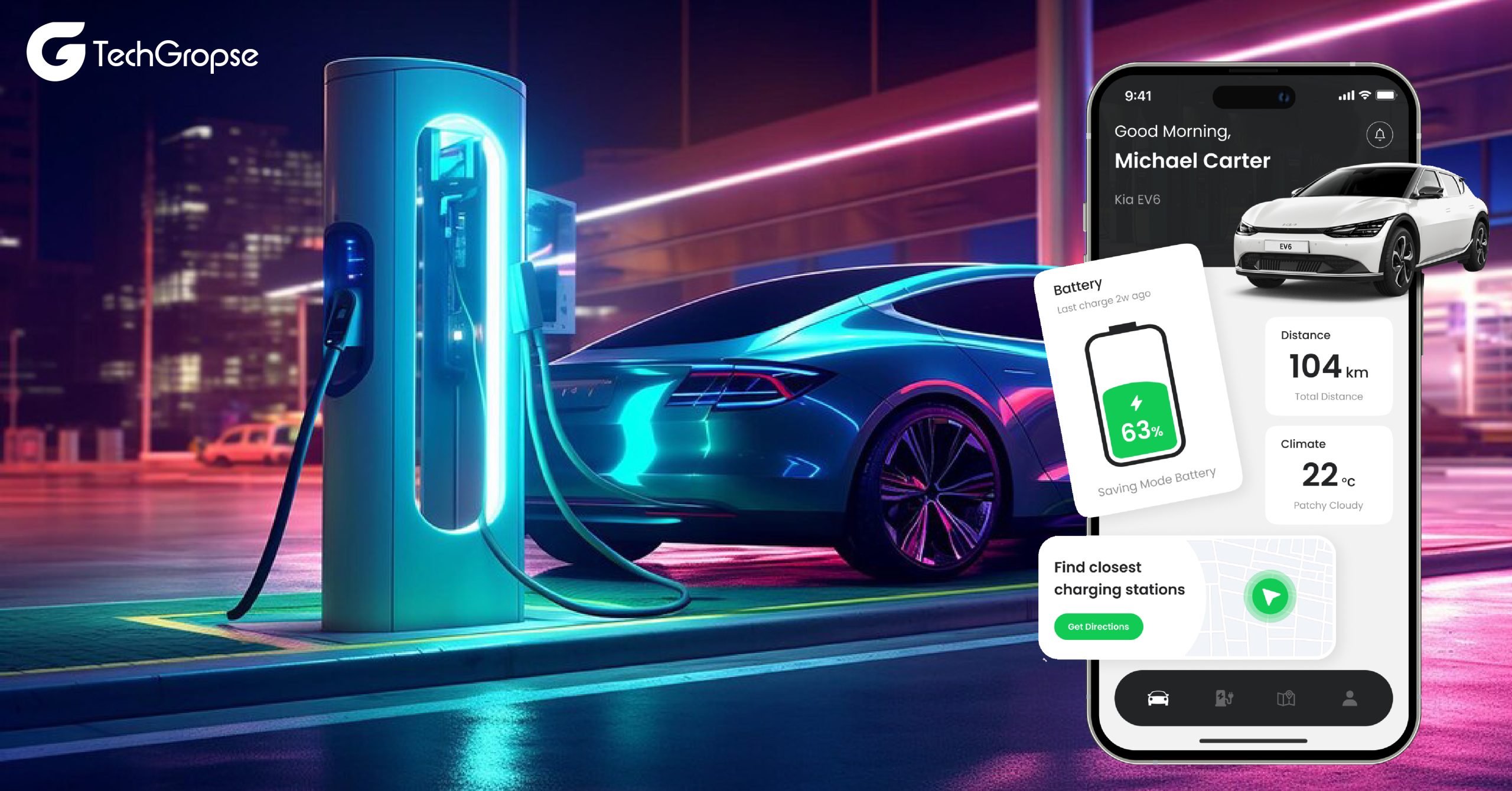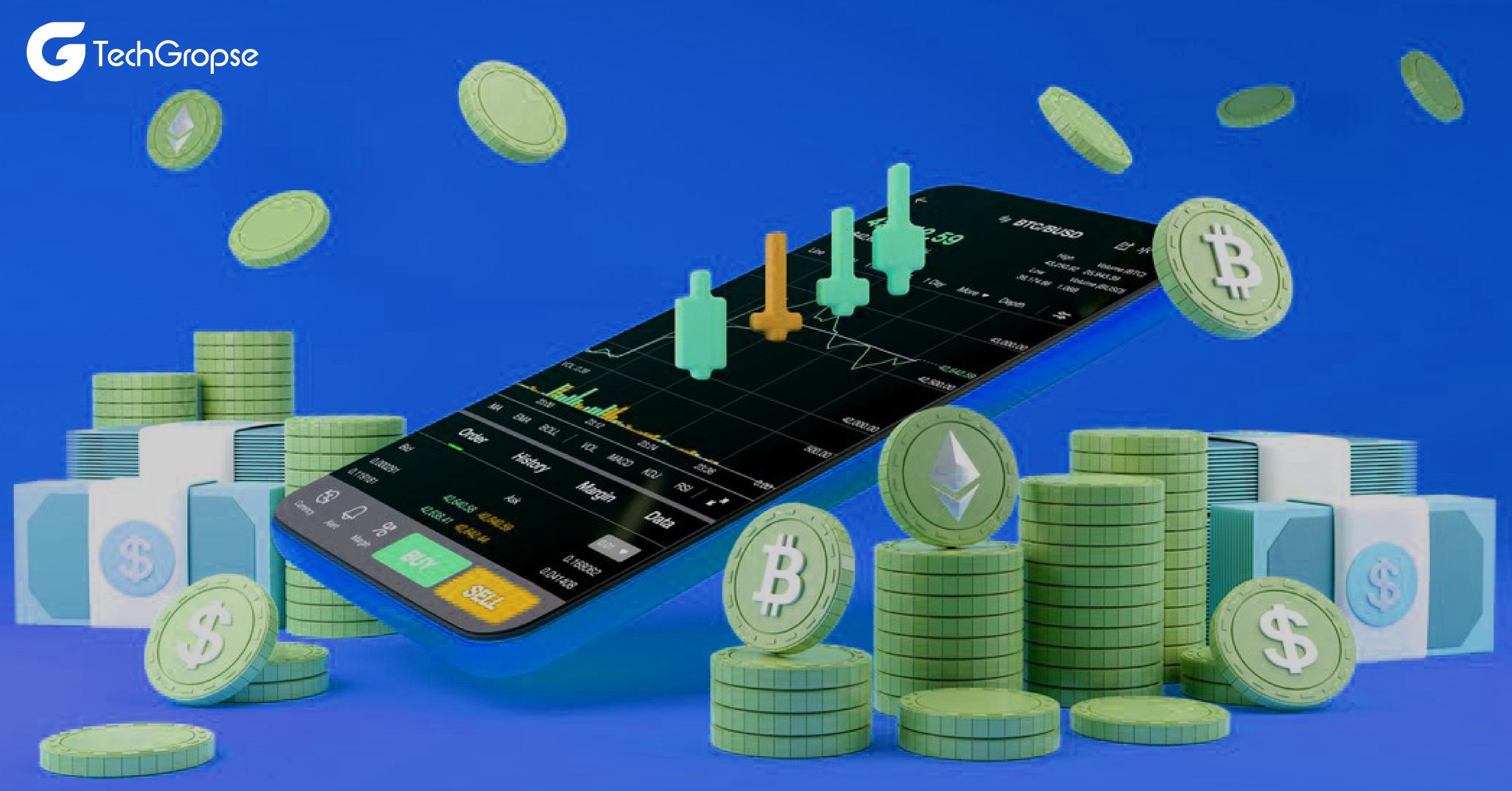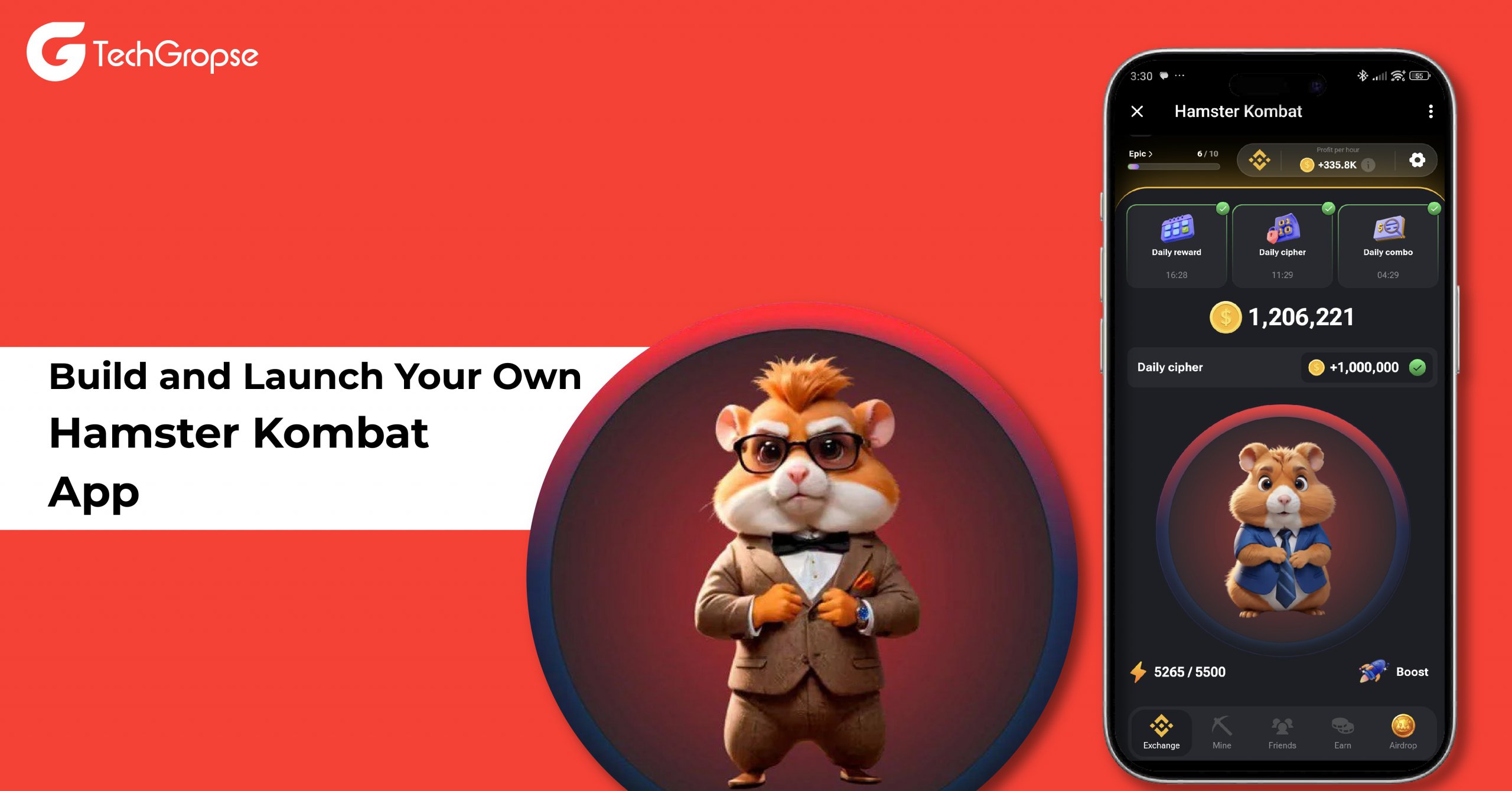Have you ever watched an Instagram live stream where the business owner guides you through the items in stock? This famous approach is called live selling and it is taking over the eCommerce world. Do you also want to build live shopping app in this advanced digital world? Why do you wait?
In the past days, live advertising on TV is the best way to marketing strategy to promote your products. But these days, lots of people like to shop on the Internet. It is super easy and that’s why people love it.
Imagine being able to browse and purchase products from the comfort of your own home while watching a live video stream where hosts showcase and demonstrate the products in real time.
It is like having a personal shopping assistant at your fingertips, providing expert advice, answering questions, and even offering exclusive deals and discounts. Nowadays shopping app development is focused to create a live shopping app.
Basically, small and medium businesses are using social media or their own websites to connect with their customers and sell stuff faster. It is a pretty cool way to shop and support your favorite stores!
Table of Contents
What is Live Shopping App?
A live shopping app is a new way of online shopping that allows consumers to interact with retailers and brands in real time through live video streaming and instant messaging.
It is like watching a TV show where the host promotes and displays products, but instead of a TV screen, it is on your smartphone or computer. Users can ask questions, get product recommendations, and make purchases directly from the app.
A live shopping app is a mobile application that combines the convenience of online shopping with the immersive experience of real-time video streaming.
It allows users to watch live video broadcasts hosted by influencers, brands, or sellers who showcase and demonstrate various products. Users can interact with the hosts, ask questions, and make purchases directly within the app.
Many companies show their interest to build live shopping app in this technical world. Live shopping apps have gained popularity due to their ability to bridge the gap between online and offline shopping experiences.
They deliver a sense of human connection and interactivity, simulating the experience of shopping in a physical store while offering the convenience of online shopping.
This combination of entertainment, information, and convenience has made live shopping apps a compelling and rapidly growing trend in the e-commerce industry.
The History of Livestream Shopping Apps
The origins of livestream shopping apps can be traced back to China, where they first achieved popularity and evolved into a booming industry. The concept of livestream shopping emerged in the early 2010s, pioneered by Chinese e-commerce platforms like JD Live and Taobao Live.
Livestream shopping in China gained momentum due to various factors. The rise of social media platforms like WeChat and the widespread use of smartphones created a conducive environment for interactive and mobile shopping experiences.
When the pandemic hit, lots of businesses were struggling to sell their things because people could not go to stores. Fancy brands, Farmers, and other sellers started using the app to sell their things online.
Lots of people started using the app too. In fact, the number of people using Taobao Live every day doubled in 2020. The app made a ton of money about $59 billion. Now, in 2022, people in China are expected to spend over $470 billion on live commerce sales.
How to Build a Winning Live-Streaming Shopping App Effectively
Developing a winning live-streaming shopping app requires careful planning, effective implementation, and attention to key factors. If you plan to build live shopping app you must consult a live shopping app development company.
Here are some steps to help you create a successful live-streaming shopping app effectively and easily:
- Define Your App’s Purpose and Target Audience: Clearly define the purpose of your app and identify your target audience. Determine the specific niche or market segment you want to serve with your live-streaming shopping app.
- Conduct Market Research: Research the market to understand the latest trends, competitor offerings, and user preferences. Identify gaps or opportunities that your app can capitalize on.
- Plan Your App’s Features and Functionality: Determine the advanced features and functionality of your app. This includes live video streaming capabilities, interactive chat functionality, product catalogs, user profiles, secure payment integration, and social media integration.
- Design User-Friendly Interface: Create an attractive and visually appealing user interface that enhances the user experience. Ensure easy navigation, clear product displays, and seamless transitions between live streams and product details.
- Choose the Right Technology Stack: Select the appropriate technology stack for your app development, live streaming protocols, including backend infrastructure, and hosting services. Consider scalability, performance, and security requirements.
- Front end: Angular, React
- Back End: Java, Laravel, Node.JS
- Payment Gateway: PayPal, Braintree
- Database: SQL Server, MongoDB, PostgreSQL
- DevOps: Jenkins, Android Studio, Amazon CloudWatch
- Cloud: AWS and Google Cloud
- Develop and Test Your App: Develop your app using the chosen technology stack and implement the planned features. Conduct thorough testing to ensure smooth functionality, compatibility with various devices, and a bug-free user experience.
- Integrate Secure Payment Gateway: Incorporate a secure payment gateway that supports various payment methods and ensures safe and smooth transactions for users.
- Optimize for Performance: Optimize your app for performance, including fast loading times, smooth video streaming, and minimal latency. Test your app under various network conditions to ensure a seamless experience for users.
- Launch and Promote Your App: Prepare a complete marketing and promotion strategy for your app launch. Leverage social media, influencer collaborations, and targeted advertising to make awareness and attract users to your app.
- Gather and Act on User Feedback: Boost user feedback and actively listen to your users’ suggestions and concerns. Continuously iterate and enhance your app based on user feedback to improve user satisfaction and retention.
Remember, developing a successful live-streaming shopping app requires ongoing maintenance, regular updates, and adaptation to evolving user needs. Stay agile and responsive to market trends and user feedback to ensure your app remains competitive and delivers a winning experience.
Consider to hire dedicated developers or leveraging pre-built platforms that offer live streaming and e-commerce integrations to simplify the development process and reduce time to market.
Types of Shopping Mobile Apps 2023
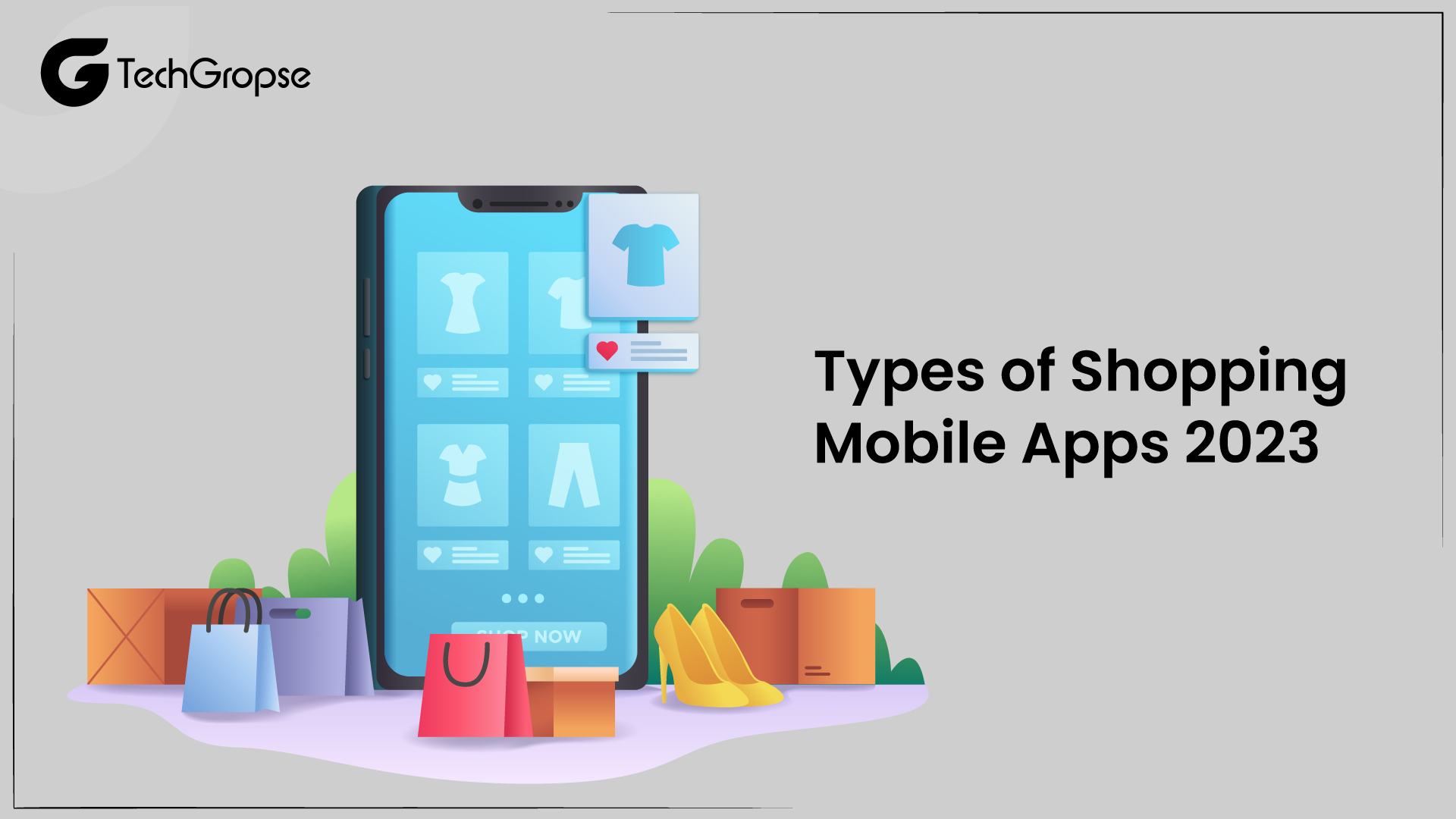
There are different types of video shopping mobile apps available in the market today. These apps serve various niches and offer exceptional features and functionalities. Before to build live shopping app you must be aware of its various features and types which perfectly suits your need.
Here are some common types of video shopping mobile apps:
- Live Streaming Shopping Apps: These apps allow real-time video streaming where hosts show and demonstrate products while interacting with viewers. Users can make purchases, ask questions, and participate in live chat during the broadcast.
- Social Commerce Apps: These apps combine social media and e-commerce, allowing users to find and buy products directly from social media platforms. They feature video content, influencers endorsing products, and user-generated reviews.
- Shoppable Video Apps: Shoppable video apps allow users to watch videos that feature products and make purchases within the app. These videos can be pre-recorded or live-streamed and are typically embedded with clickable product links or tags for direct purchasing.
- Video Styling and Fashion Apps: These apps focus on fashion and styling, offering users video content featuring fashion influencers or stylists showing outfits, delivering style tips, and linking to the products for purchase.
- Virtual Try-On Apps: Virtual try-on apps leverage augmented reality or virtual reality technology to allow users to virtually try on products like accessories, clothing, or cosmetics. Users can see how the products look on them before making a purchase.
- Expert Advice and Tutorial Apps: These apps feature videos where experts offer product recommendations, tutorials, or educational content related to specific industries like beauty, fitness, or home improvement. Users can learn from experts and make informed purchasing decisions.
- Auction and Live Bidding Apps: These apps facilitate live auctions or bidding events where users can bid on products in real-time through video streaming. Users can participate in auctions, place bids, and win products based on bidding results.
- Influencer Shopping Apps: Influencer shopping apps collaborate with social media influencers who promote products. Users can browse through influencer-curated collections, watch videos featuring influencers, and purchase recommended products.
The mobile app development company builds some apps video shopping mobile apps, and the possibilities continue to expand as technology advances.
Each type of app caters to different consumer interests and preferences, providing unique experiences for users seeking interactive and immersive shopping experiences.
Essential Features to Build Live Shopping App
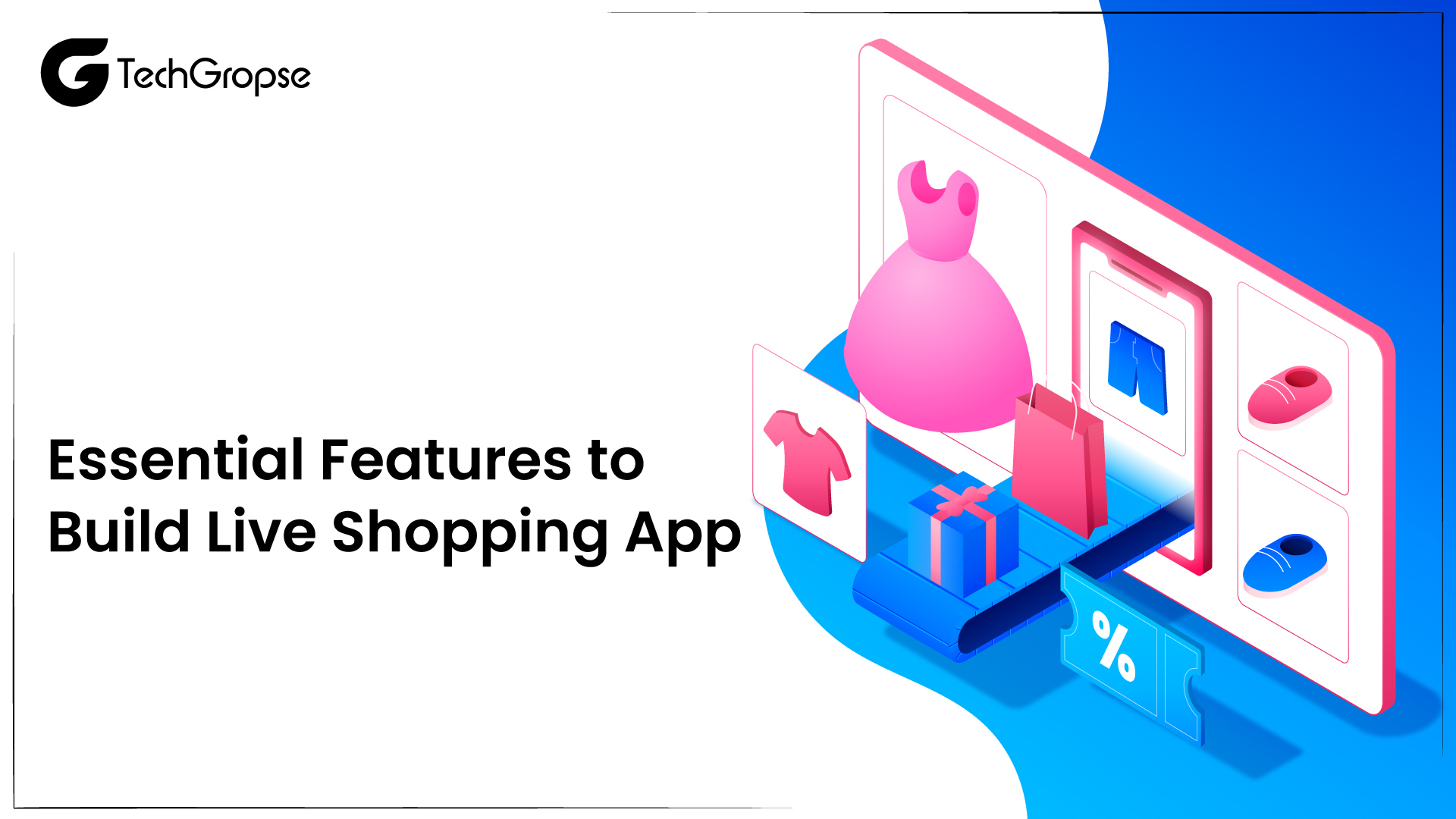
To build live shopping app, an On-demand app development company considers essential features that enhance the user experience and facilitate seamless interactions. Here are some essential features to consider:
- User Registration and Profiles: Allow users to make accounts, sign in, and customize their profiles. This feature enables personalized experiences, order history monitoring, and targeted promotions.
- Live Video Streaming: Implement real-time video streaming functionality to allow hosts or sellers to show products, and interact with viewers. The streaming should support high-quality video and smooth playback.
- Interactive Chat and Comments: Include a chat or comments feature that allows viewers to engage with hosts, receive real-time responses, and ask questions. This attractive feature improves user engagement and builds a sense of community.
- Product Catalog and Listings: Offer a well-organized product catalog with clear product descriptions, prices, clear images, and availability. Users can easily browse through the available products during live streams and access details.
- Product Recommendations and Tags: Enable hosts to tag or recommend specific products during the live stream. Where users can click on the product tags or recommendations to view additional details and make purchases.
- Shopping Cart and Checkout: Implement a shopping cart functionality that allows users to add products while watching the live stream and proceed to a seamless checkout process. Provide secure payment options and ensure a smooth transaction experience.
- Notifications and Reminders: Send push notifications to users about upcoming live videos, new product launches, or special promotions and discounts. Remind users about saved items in their cart or wishlist and send order status updates.
- Social Media Integration: Allow users to share live streams, product information, or their purchases on various social media platforms. Integrate with famous social media channels to improve visibility and facilitate user-generated content.
- Reviews and Ratings: Enable users to leave reviews and ratings for products they have purchased. User-generated feedback helps build trust and informs other potential buyers about the quality and suitability of products.
- Analytics and Insights: Incorporate analytics tools to gather data on user behavior, engagement, and sales performance. Analyze these insights to make data-driven decisions, enhance the user experience, and optimize business strategies.
What is the Cost to Build Live Shopping App?
The cost to build a live shopping app can differ depending on different factors like the complexity of the app, the development platform, the features and functionalities included, the technology stack, the development team’s rates, and the time required for development. Additionally, Live shopping app development offers affordable prices based on the
app design, testing, maintenance, and ongoing updates should also be considered.
Generally, developing a live shopping app involves frontend and backend development, video streaming integration, database management, payment gateway integration, user authentication, and different other components. The complexity and customization needed for these components will impact the overall cost.
| Cost Component | Estimated Cost Range |
| App Design | $5,000 – $20,000 |
| Frontend Development | $10,000 – $40,000 |
| Backend Development | $15,000 – $50,000 |
| Database Management | $5,000 – $15,000 |
| Video Streaming | $10,000 – $30,000 |
| Payment Gateway | $5,000 – $20,000 |
| User Authentication | $5,000 – $15,000 |
| Additional Features | $10,000 – $50,000+ |
| Quality Assurance | $5,000 – $20,000 |
| Project Management | $5,000 – $15,000 |
| Total Estimated Cost | $75,000 – $275,000+ |
Please note that the costs provided are estimates and can differ based on project needs and the rates charged by development teams or agencies.
Today’s Popular Livestream Shopping Apps
If you plan to build live shopping app you must consider several popular livestream shopping apps that have gained recognition for their features and user experience.
Here are some of the best live-stream shopping apps that make them stand out:
1. Taobao Live:
Taobao Live, operated by Alibaba Group, is one of the highest livestream shopping apps in China. It offers an expansive range of products from different brands and sellers.
Key features
- Interactive chat
- Product recommendations
- Limited-time promotions
- Seamless integration
2. ShopShops:
ShopShops is a livestream shopping app that focuses on providing a global shopping experience. It connects users with hosts who showcase products from different cities around the world.
Key features
- Interactive chat
- Product tagging
- Secure payment system
3. NTWRK:
NTWRK is a livestream shopping app that combines shopping with entertainment and exclusive drops. It features limited-edition releases, celebrity collaborations, and interactive live shows.
Key features
- Shoppable videos
- Chat functionality
- Gamified shopping experience
4. Amazon Live:
Amazon Live is Amazon’s livestream shopping platform, available within the Amazon app. It enables brands and influencers to live stream product demonstrations and interact with viewers.
Key features
- Users can shop directly from the live stream
- Access product details
- Robust customer support and fulfillment services.
5. WISHCATCH:
WISHCATCH is a livestream shopping app that originated in South Korea and has gained popularity worldwide.
Key features
- Wide range of products
- Interactive live shows
- Real-time chat
- Secure payment system
- Incorporates gamified elements
These livestream shopping apps show different features like shoppable videos, attractive chat, product recommendations, secure payments, and social media integration. While each app has its unique offerings, they all aim to deliver an engaging and convenient shopping experience through live video streaming and outstanding features.
The Bottom Line
Build live shopping app can be a complex process, but having a well-designed and user-friendly app can lead to increased sales, user engagement, and business growth.
By following the steps outlined in this article, you can create a successful live shopping app that delivers a unique shopping experience to your users. Keep monitoring and enhancing your app to satisfy the requirements of your customers and stay ahead of the competition. We hope this guide has been informative and helpful in providing you with a comprehensive understanding of how to build a live shopping app.
FAQ: How to Build Live Shopping App
1. What is a live shopping app?
A live shopping app is a mobile application that allows users to interact with sellers and buy products in real time. These apps often include features such as video streaming, instant messaging, and push notifications to provide a seamless shopping experience.
2. Do I require coding experience to build a live shopping app?
While having coding experience can be helpful, it is not necessary to build a live shopping app. There are some app development platforms available that allow you to make an app with drag-and-drop interfaces and pre-built components. Additionally, you can hire mobile app developers to create your app for you.
3. How can I market my live shopping app?
There are some interesting ways to market your live shopping app such as creating social media accounts and websites, engaging users with incentives and offers, and leveraging paid user acquisition channels. It is important to promote your app to your target audience and deliver a unique value proposition to attract and retain users.

Hello All,
Aman Mishra has years of experience in the IT industry. His passion for helping people in all aspects of mobile app development. Therefore, He write several blogs that help the readers to get the appropriate information about mobile app development trends, technology, and many other aspects.In addition to providing mobile app development services in USA, he also provides maintenance & support services for businesses of all sizes. He tried to solve all their readers’ queries and ensure that the given information would be helpful for them.







































































































